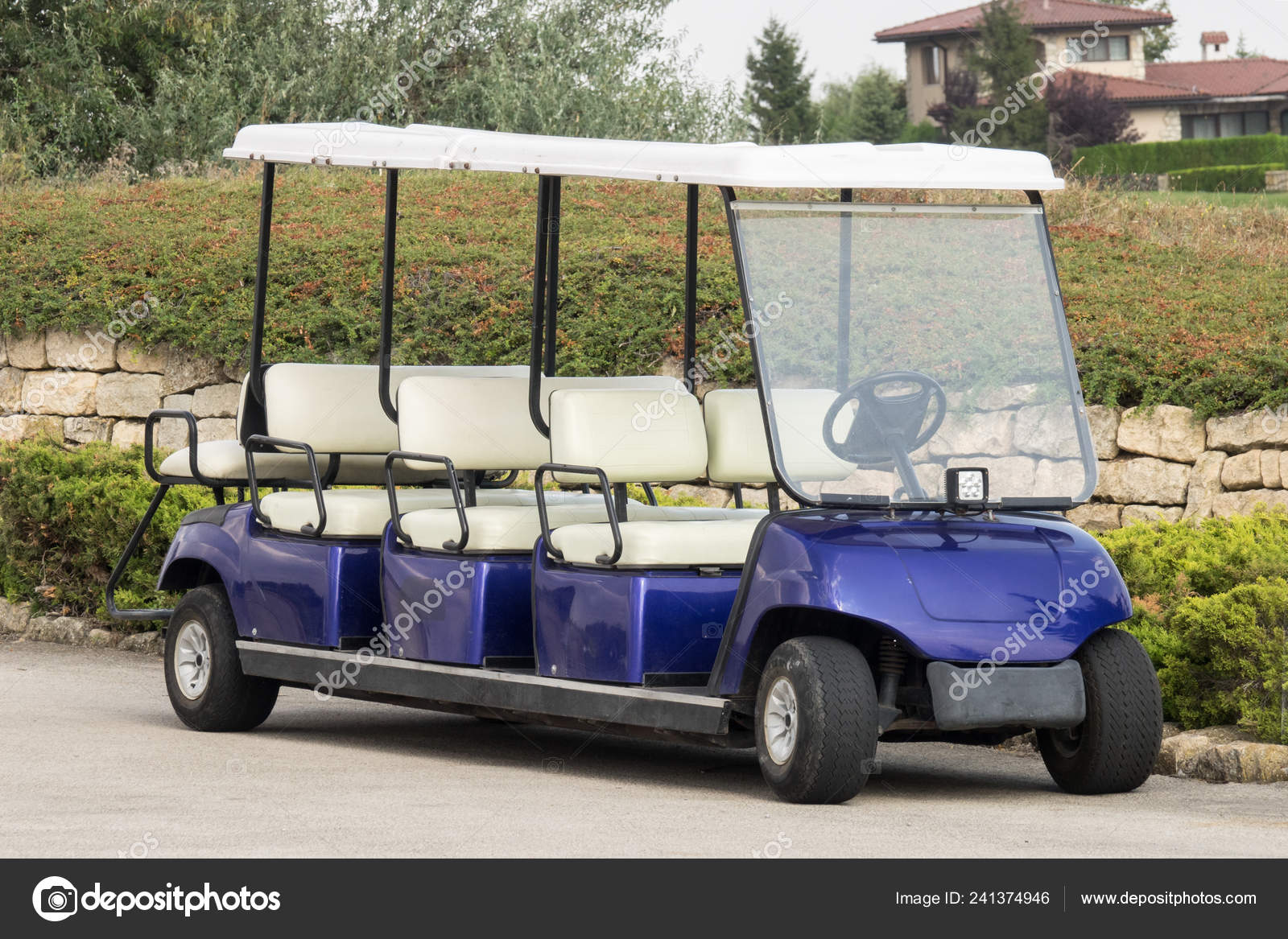How Long Is A Golf Cart

Golf carts, those nimble vehicles commonly seen zipping around golf courses, have become synonymous with leisurely rounds and convenient transportation on the links. If you’ve ever wondered about the size and dimensions of a golf cart, you’re not alone. Understanding the length of a golf cart is not only useful for planning purposes but also for ensuring a comfortable and efficient ride.
In this article, we’ll dive into the topic of “How long is a golf cart?” and explore the dimensions, capacity, and practical considerations associated with these versatile vehicles. Whether you’re a golfer looking to rent or purchase a golf cart, a course manager seeking information for fleet management, or simply a curious enthusiast, we’ve got you covered.
From the length and width to passenger capacity and weight limits, we’ll delve into the specifics of golf cart dimensions. We’ll also explore variations in golf cart types, practical tips for maneuvering them, and safety guidelines for a smooth and enjoyable experience.
So, let’s buckle up and embark on a journey to uncover the secrets of golf cart dimensions and discover just how these compact vehicles measure up on the golf course and beyond.

Understanding Golf Carts: An Overview
Golf carts, also known as golf cars or buggies, are small vehicles designed for transporting golfers and their equipment around the golf course. They provide an efficient and convenient mode of transportation, enabling players to navigate the course without excessive walking or carrying heavy bags. Golf carts are not only limited to golf courses; they are also widely used in various recreational areas such as resorts, parks, and retirement communities.
Golf Cart Dimensions: Length, Width, and Height
The dimensions of a golf cart play a crucial role in determining its maneuverability, storage capacity, and overall usability. Let’s explore the key dimensions of a standard golf cart:
| Dimension | Range/Measurement |
|---|---|
| Length | 8 to 12 feet |
| Width | 3.5 to 5 feet |
| Height | 5 to 6 feet |
These dimensions can vary slightly depending on the specific model and brand of the golf cart. Compact or personal-use golf carts may have smaller dimensions, while utility carts designed for commercial purposes might have larger dimensions to accommodate cargo or additional passengers.
Understanding the dimensions of a golf cart is important for several reasons. Firstly, it allows golf course managers to plan and allocate sufficient space for storage, maintenance, and parking of the carts. Additionally, golfers who own or rent a cart can ensure that it fits comfortably in their garage or transportation vehicle.
Passenger Capacity of Golf Carts
Golf carts are designed to transport both golfers and their equipment across the course efficiently. The passenger capacity of a golf cart refers to the number of occupants it can safely carry. Standard golf carts typically have a seating capacity for two to four passengers.
The seating arrangement in a golf cart can vary. Some carts have two forward-facing seats, while others feature a bench-style seating configuration with seats facing each other. It’s essential to adhere to the designated seating capacity to maintain safety and prevent overloading of the cart.
In addition to the seating capacity, golf carts often have designated storage areas for golf bags, clubs, and other equipment. These storage compartments ensure that golfers can transport their gear conveniently during their round.
Golf Cart Weight and Load Capacity
The weight of a golf cart is an important consideration as it impacts its performance, durability, and safety. The weight of a standard golf cart can range from 500 to 1,000 pounds, depending on various factors such as the materials used in construction, additional features, and the type of power source.
Load capacity refers to the maximum weight that a golf cart can safely carry, including passengers and any additional cargo. It’s crucial to adhere to the load capacity limits specified by the manufacturer to prevent damage to the cart’s structure and ensure safe operation.
Factors such as the terrain of the golf course, accessories added to the cart, and the presence of inclines can influence the load capacity and overall performance of the golf cart. It’s important to consider these factors when planning to transport additional items or when selecting a cart for specific course conditions.
Variations in Golf Cart Types and Sizes
Golf carts come in various types and sizes to cater to different needs and preferences. Let’s explore some of the common variations:
Traditional Golf Carts
Traditional golf carts are the most commonly used type on golf courses. They typically have seating for two to four passengers and offer ample space for golf bags and equipment storage. These carts prioritize comfort and convenience, providing a smooth ride across the course while carrying golfers and their gear.
Utility Carts and Specialty Vehicles
Utility carts, also known as workhorses, are designed for versatility and practicality beyond golfing purposes. They are equipped with larger cargo beds or additional seating options to transport equipment, supplies, or maintenance staff around the golf course. Utility carts are commonly used for tasks such as course maintenance, landscaping, and general utility purposes.
Specialty vehicles encompass a wide range of golf cart variations, including custom-built carts for specific purposes. These can include carts designed for medical services, food and beverage transportation, security patrols, or even entertainment purposes. Specialty vehicles are tailored to meet specific needs and often feature unique modifications to support their intended function.
Compact and Lightweight Golf Carts
Compact and lightweight golf carts have gained popularity among golfers seeking convenience and portability. These carts are designed for personal use and are often foldable or collapsible for easy storage and transportation. They are ideal for golfers who prefer walking the course but still desire the option to use a cart when needed.
Larger golf carts are available for commercial or utility purposes, with increased seating capacity and cargo space. These carts are commonly used in resorts, parks, and large-scale recreational areas to transport visitors or provide guided tours.
Factors Affecting Golf Cart Speed and Range
The speed and range of a golf cart depend on several factors, including the power source and design specifications. Let’s explore the key factors that influence the speed and range of a golf cart:
Power Source: Electric vs. Gas-Powered Carts
Golf carts are predominantly powered by either electricity or gasoline. Electric carts are powered by rechargeable batteries and offer quiet operation, zero emissions, and ease of maintenance. These carts typically have a lower top speed but can provide sufficient power and range for a round of golf.
Gas-powered carts, on the other hand, use internal combustion engines similar to those found in automobiles. They offer higher top speeds and better torque, making them suitable for hilly courses or off-road terrains. However, they require regular refueling and produce emissions during operation.
Battery Capacity and Charging Time for Electric Carts
For electric golf carts, the battery capacity plays a significant role in determining the range and duration of use. Higher-capacity batteries provide extended range, allowing golfers to complete multiple rounds without recharging. Charging time varies depending on the charger type and battery capacity but typically ranges from 4 to 8 hours.
Golfers and course managers should consider the battery capacity and charging infrastructure available to ensure that carts are ready for use during peak hours and that there is sufficient power to last through a busy day.
Fuel Efficiency and Maintenance Considerations for Gas-Powered Carts
Gas-powered golf carts have different fuel efficiency characteristics compared to electric carts. The fuel efficiency is influenced by factors such as engine size, load capacity, and terrain conditions. Regular maintenance, including oil changes, filter replacements, and spark plug checks, is necessary to ensure optimal performance and longevity of gas-powered carts.
Practical Considerations for Golf Cart Usage
To make the most of a golf cart, golfers and course managers should consider practical aspects that affect its usability and longevity. Here are some essential considerations:
Maneuvering through Different Terrains and Inclines
Golf courses can feature a variety of terrains, including flat fairways, sloping hills, and rough areas. Golf carts are designed to navigate these terrains, but understanding their capabilities is crucial to ensure safe operation. It’s important to follow the designated cart paths and avoid driving on areas where carts are prohibited, such as greens and bunkers.
When encountering inclines or steep slopes, it’s important to drive at a controlled speed and avoid sudden acceleration or braking. Utilize the cart’s braking system appropriately and maintain a safe distance from other golfers and obstacles.
Storage and Transportation Options for Golf Carts
For golf cart owners or course managers, proper storage and transportation options are vital to protect the carts when not in use or during offseasons. Secure storage areas with protection from the elements, such as a covered garage or storage facility, help extend the lifespan of the cart and prevent damage.
Transporting golf carts between courses or off-site events may require specialized trailers or hauling equipment. Ensure that the transportation methods comply with local regulations and consider using tie-down straps or other securing mechanisms to prevent shifting or damage during transit.
Safety Guidelines and Regulations for Operating Golf Carts
Safety should always be a priority when operating golf carts. Familiarize yourself with the specific safety guidelines and regulations in your area or golf course. Some common safety practices include:
- Observe the designated speed limits and signage on the course.
- Always keep hands, feet, and belongings inside the cart while it’s in motion.
- Do not overload the cart beyond its designated capacity.
- Use the provided seatbelts, if available, to ensure passenger safety.
- Avoid reckless driving, sharp turns, or sudden maneuvers that may cause instability.
By adhering to safety guidelines, golfers can minimize the risk of accidents and ensure a safe and enjoyable experience for themselves and others on the course.
Conclusion
Understanding the dimensions and capacity of golf carts is essential for both golfers and course managers. It allows for efficient planning, proper utilization, and enhanced safety on the course. By considering factors such as cart dimensions, passenger and load capacity, and power source, golfers can select the appropriate cart for their needs. Additionally, adhering to practical considerations, such as maneuvering on different terrains and following safety guidelines, ensures a smooth and enjoyable golf cart experience. So, whether you’re cruising through the fairways or utilizing carts for utility purposes, having a comprehensive understanding of golf cart dimensions and capacity will undoubtedly enhance your golfing or recreational experience.





